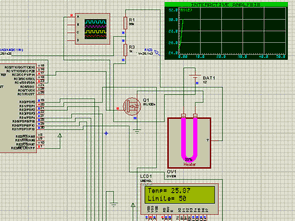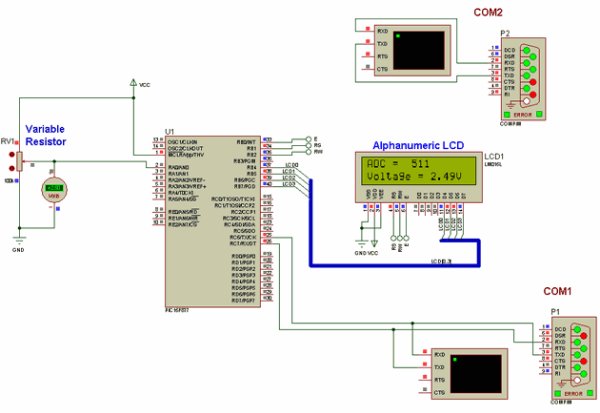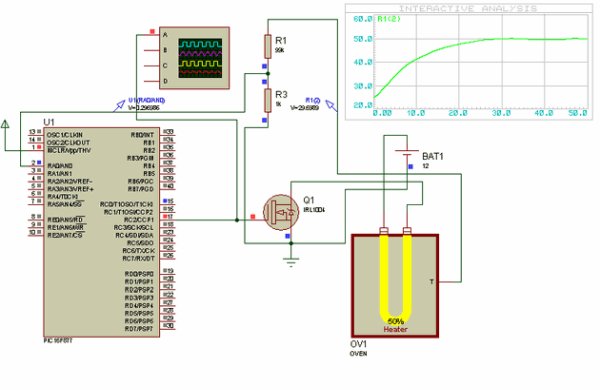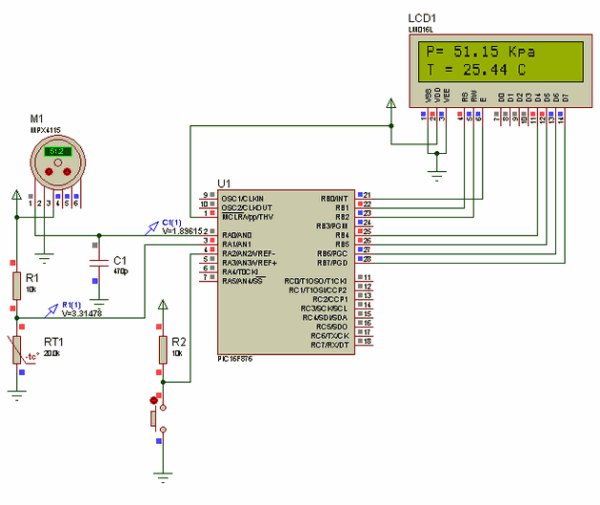Previously shared CCS C sample application circuit code archive (C and Hex Isis) is a large archive with all source codes and proteus simulation circuits such as CCS C projects shared in the font…. Electronics Projects, CCS C Applications Proteus Simlations “microchip projects, microcontroller projects, pic16f876 projects, pic16f877 projects, pic18f2550 projects, pwm circuits, “
Previously shared CCS C sample application circuit code archive (C and Hex Isis) is a large archive with all source codes and proteus simulation circuits such as CCS C projects shared in the font.
In a majority of CCS C projects, pic16f876 and pic16f877 microcontrollers are used. In projects with USB communication, pic18f4520 pic18F4550 is used.
CCS C PROJECT LIST
T3.E1: Turn on a LED with a switch.
T3.E2: Decimal counter from 0 to 99 with 7 segments.
T3.E3: To control a menu on the LCD with two push buttons.
T3.E4: Displaying the status of a port entry via a graphical display
T3.E5: Displaying data of 3×4 matrix keyboard on LCD.
T3.E6: Access control with keyboard.
T3.E7: Control the speed of a DC motor with the keyboard.
T4.E1: Opening and closing the Led with external cut.
T4.E2: 1 KHz signal generation via TMR0.
T4.E3: 1 second delay generation via TMR1.
T4.E4. Measuring pulse width using TMR1 and external cut.
T4.E5: Generating a 1 KHz signal via TMR2.
T4.E6: Control the speed of a DC motor with the keyboard. Using TMR1. Digital tachometer
T4.E7: Multi-function with one key.
T5.E1: Reading a voltage from channel AN0.
T5.E2: Thermometer with NTC.
T5.E3: NTC and pressure sensor barometer / Altimeter.
T5.E4: Acquisition of negative tensions.
T6.E1: Measurement of a pulse width using the CCP module.
T6.E2: Generating a 2 KHz signal via the CCP module.
T6.E3: Conversion of AD to CCP module. Producing a PWM signal proportional to the measured signal.
T6.E4. Basic oscilloscope with CCP module and graphical display.
T6.E5: PID control of oven temperature.
T6.E6: Problems in the PWM simulation of the CCP module.
T7.E1: PIC serial communication
T7.E2: Serial communication from PIC to PC.
T7.E3: PC communication to the PIC (two-way).
T7.E4. An I2C series EEPROM write / read.
T7.E5: Reading the I2C temperature sensor, an I2C real-time clock for storage of your data in the I2C series EEPROM. Read EEPROM data via serial port.
T8.E1: Real-time clock with PIC18F4520.
T8.E2: Self-regulating voltage amplifier with PIC18F4520.
T9.E1: PID control of an oven temperature with RTOS. More visualization control. Check more screens and programming with the PIC18F4520.
T10.E1: CDC USB.
T10.E2: CDC USB.
SAMPLE PROTEUS CIRCUIT DIAGRAMS
Source: CCS C APPLICATIONS PROTEUS SIMLATIONS
Alternative File Download LINK list (in TXT format): LINKS-25948.zip





